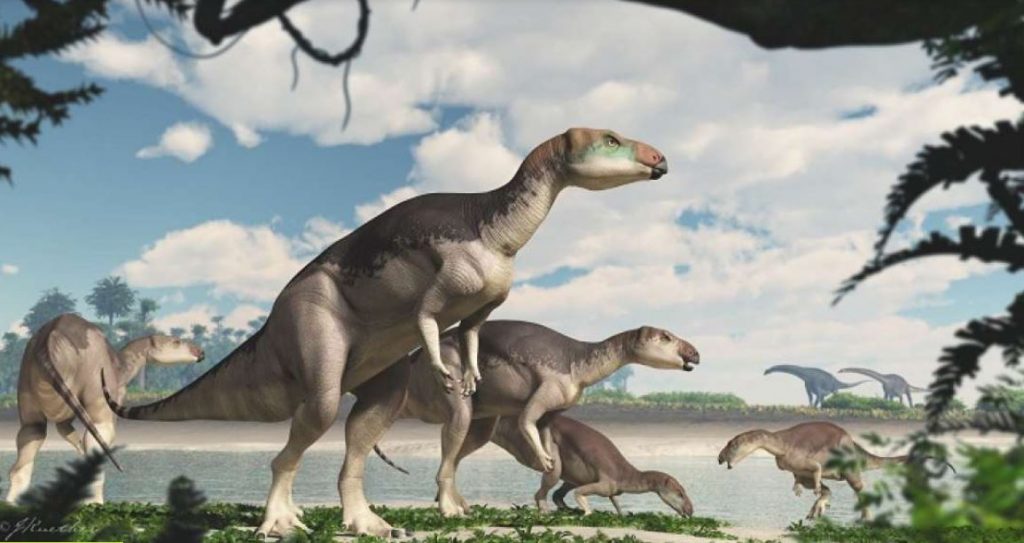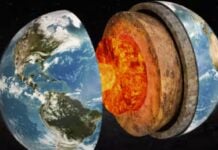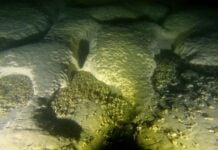In the Australian outback, paleontologists have identified a new species of iguanodontian dinosaur.
While a new dinosaur is a weekly announcement somewhere in the world, this is the first time bones from a dinosaur herd have been found in Australia.

Even more remarkably, all of them have been turned to opal, including the most complete opalized dinosaur skeleton ever found.
Poor dinosaur country
Australia has yielded a poor return for dinosaur hunters compared to other continents, with just 10 known species, most of which have only been preserved as a few bones. However, a few of what has been found, both from dinosaurs and other Cretaceous species, have turned to opal, giving them an unworldly beauty almost unknown elsewhere.
The bones that have proven so rich to science were found by Bob Foster, an opal miner at Lightning Ridge, in New South Wales. To Foster the low quality of the opalization made the bones a frustrating encumbrance, impeding his access to high-value stones that change color under different lights. To paleontologists, however, their price was above rubies, let alone the best opals.

University of New England PhD student Tom Brougham explains that it takes a “very specific set of circumstances” for silicate-rich minerals to percolate through a substrate and create opals. Fortunately, the most favorable combination of chemical and climatic conditions occurred around the long-gone Eromanga Sea, inhabited by giant plesiosaurs and ichthyosaurs and whose shores made ideal homes for dinosaurs.
Some of the bones found at Lightning Ridge have been on display to museum visitors for decades, but paleontologists had trouble putting them together to scientifically describe the find. Eventually, they worked out this was because they were from an adult and three juveniles, not a single individual. The majority of bones from each are missing, but somehow all four sets of shoulders have survived.
Fostoria dhimbangunmal
The discovery has now been named Fostoria dhimbangunmal after Foster and a translation in the local aboriginal language of sheepyard, a popular name for the place where they were found. Sixty F. dhimbangunmal bones have been found, all of them covered in opal, an astonishingly rich haul anywhere, and unprecedented in Australia.

The good collection of skull bones from F. dhimbangunmal reveals a horny beak used to crop vegetation. Their build resembled the kangaroos that would inhabit the same places millions of years later, although at 5 meters (16 feet) tall they were far bigger. Not being well armored, they probably used herds as their defense against predators.
WOW I would really love to own one of these opalized bones in my geological collection. Who can get me one?










